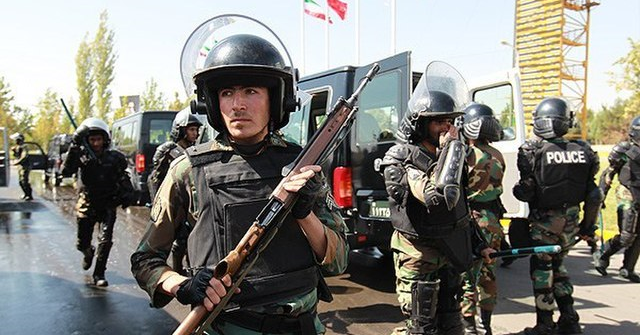Following the untimely death of President Ebrahim Raisi on 19 May, Iran will be holding elections on 28 June. For the regime under Supreme Leader Ali Khamenei, the election will be a chance to display a semblance of democracy. Conversely, the proceedings (which will inevitably be manipulated) may provide an opportunity for a new spontaneous protest movement. This scenario would likely lead to bloody repression, as seen routinely in recent years.
Raisi, seen as a potential successor to Khamenei, died in a helicopter crash on 19 May in the north-west of Iran. He was elected in 2021 with 62% of the vote, in what Freedom House described as a “heavily manipulated contest”. The Guardian Council, a constitutional body under the purview of Khamenei, had rejected almost 600 candidates from running beforehand. The government also pressured media outlets into not reporting negatively about Raisi’s campaign.
Although the 2021 election was not marred with widespread instances of civil unrest, there is a precedent for it. After the 2009 presidential election, spontaneous protests occurred and eventually turned into the Iranian Green Movement. After the campaign (which would last over a year) started out peacefully, it quickly degenerated into violence. The suppressive tactics of the Islamic Revolutionary Guard Corps and law enforcement personnel led to at least 36 deaths and thousands of arrests.
Many other large-scale protest movements have occurred since 2009, with the Mahsa Amini protests of 2022/23 being the most recent. Amini’s death at the hands of Iran’s Guidance Patrol led to the largest bout of unrest since the Islamic Revolution. Demonstrators did not simply call for a relaxation of the country’s morality laws, but an end to the current regime. The movement was eventually curtailed with disproportionate acts of state violence, leading to over 500 deaths and 19,000 arrests.
The historical pattern of electoral meddling is already evident in the run-up to the 28 June election. Iran’s Guardian Council has only allowed six establishment figures to participate, rejecting other 74 candidates, some of whom are reformists. It is likely that during the ballot, vote tampering and the censoring of media outlets will also occur. This illusion of choice will likely precede a voting boycott, as seen by recent parliamentary elections and the 2021 presidential election.
The continuation of the status quo risks further alienating individuals who see Raisi’s death as a potential watershed moment. The hope for reform and residual tensions from the Mahsa Amini protests may encourage a new round of pro-democracy protests. Such a cause would certainly be championed by Iran’s youth, a more reformist and politically conscious generation. It is these individuals who have continually been at the forefront of recent movements.

Following the events of the past few years, the security forces will expect unrest and will likely use violent preventive measures. This will probably be seen with the arrests of known dissidents and a zero-tolerance policy towards political gatherings. Therefore, the most likely scenario before and after the election is scattered acts of civil unrest which will be mostly quelled. University campuses and other parts of urban centres where younger individuals congregate would be the obvious locations for unrest.
The most impactful scenario would be a large-scale outbreak of civil unrest not too dissimilar in scope to previous movements. Such a movement would attempt to capitalise on popular discontent and would seek to reject any winner of the presidential election. From there, maximalist objectives (e.g. the dissolution of the regime) would likely be sought by more extreme elements, possibly leading to strike action and rioting. As seen in the Mahsa Amini protests, demonstrations could transcend urban areas and could involve rural working classes. However, they would likely begin in Iran’s large towns and cities.
In either scenario, travellers in Iran would likely face disruption due to the zealous security protocols of the Iranian state. Locally, any demonstrations would be met with disproportionate countermeasures by the police and military, including the use of live rounds. The authorities would also likely employ means to prevent mobilisation, as seen previously in internet blackouts and social media restrictions.
Leave a comment below or ask us directly. For more information on our bespoke risk management services, book a call today. Order custom analyst papers like our Traveller Insight to stay informed and ahead of the curve.